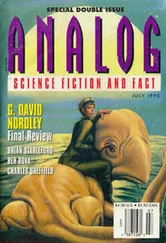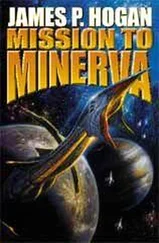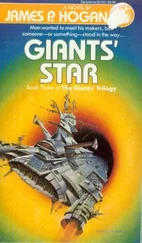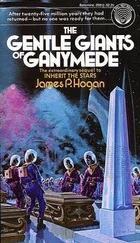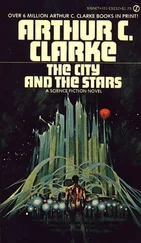James Hogan - Inherit the Stars
Здесь есть возможность читать онлайн «James Hogan - Inherit the Stars» весь текст электронной книги совершенно бесплатно (целиком полную версию без сокращений). В некоторых случаях можно слушать аудио, скачать через торрент в формате fb2 и присутствует краткое содержание. Жанр: Фантастика и фэнтези, на английском языке. Описание произведения, (предисловие) а так же отзывы посетителей доступны на портале библиотеки ЛибКат.
- Название:Inherit the Stars
- Автор:
- Жанр:
- Год:неизвестен
- ISBN:нет данных
- Рейтинг книги:3 / 5. Голосов: 1
-
Избранное:Добавить в избранное
- Отзывы:
-
Ваша оценка:
- 60
- 1
- 2
- 3
- 4
- 5
Inherit the Stars: краткое содержание, описание и аннотация
Предлагаем к чтению аннотацию, описание, краткое содержание или предисловие (зависит от того, что написал сам автор книги «Inherit the Stars»). Если вы не нашли необходимую информацию о книге — напишите в комментариях, мы постараемся отыскать её.
Inherit the Stars — читать онлайн бесплатно полную книгу (весь текст) целиком
Ниже представлен текст книги, разбитый по страницам. Система сохранения места последней прочитанной страницы, позволяет с удобством читать онлайн бесплатно книгу «Inherit the Stars», без необходимости каждый раз заново искать на чём Вы остановились. Поставьте закладку, и сможете в любой момент перейти на страницу, на которой закончили чтение.
Интервал:
Закладка:
With Schorn’s failure to produce a reliable indication of the length of the Lunarian day, there was still no way of assigning any absolute values to the calendar, although sufficient corroborating evidence had been forthcoming from various sources to verify beyond reasonable doubt that it was indeed a calendar. As more clues to Lunarian electrical units were found by Electronics, an alternative approach to obtaining the elusive Lunarian unit of time suggested itself. If Mathematics could untangle the equations of electrical oscillation, they should be able to manipulate the quantities involved in such a way as to express the two constants denoting the dielectric permittivity and magnetic permeability of free space in Lunarian units. The ratio of these constants would yield the velocity of light, expressed in Lunarian units of distance per Lunarian units of time. The units for representing distance were understood already; therefore, those used for measuring time would be given automatically.
All this activity in UNSA naturally attracted widespread public attention. The discovery of a technologically advanced civilization from fifty thousand years in the past was not something that happened very often. Some of the headlines flashed around the World News Grid when the story was released, a few weeks after the original find, were memorable: MAN ON MOON BEFORE ARMSTRONG; some were hilarious: EXTINCT CIVILIZATION ON MARS; some were just wrong: CONTACT MADE WITH ALIEN INTELLIGENCE. But most summed up the situation fairly well.
In the months that followed, UNSA’s public relations office in Washington, long geared to conducting steady and predictable dealings with the news media, reeled under a deluge of demands from hard-pressed editors and producers all over the globe. Washington struggled valiantly for a while, but in the end did the human thing, and delegated the problem to Navcomms’ local PR department at Houston. The PR director at Houston found a ready-made clearinghouse of new information in the form of Group L, right on his doorstep, so still another dimension was added to Hunt’s ever growing work load. Soon, press conferences, TV documentaries, filmed interviews, and reporters became part of his daily routine; so did the preparation of weekly progress bulletins. Despite the cold objectivity and meticulous phrasing of these bulletins, strange things seemed to happen to them between their departure from the offices of Navcomms and their arrival on the world’s newspaper pages and wall display screens. Even stranger things happened in the minds of some people who read them.
One of the British Sunday papers presented just about all of the Old Testament in terms of the interventions of space beings as seen through the eyes of simple beholders. The plagues of Egypt were ecological disruptions deliberately brought about as warnings to the oppressors; flying saucers guided Moses through the Red Sea while the waters were diverted by nucleonic force fields; and the manna from heaven was formed from the hydrocarbon combustion products of thermonuclear propulsion units. A publisher in Paris observed the results, got the message, and commissioned a free-lancer to reexamine the life of Christ as a symbolic account of the apparent miracle workings of a Lunarian returning to Earth after a forty-eight-thousand-year meditation in the galactic wilderness.
"Authentic" reports that the Lunarians were still around abounded. They had built the pyramids, sunk Atlantis, and dug the Bosporus. There were genuine eyewitness accounts of Lunarian landings on Earth in modern times. Somebody had held a conversation with the pilot of a Lunarian spaceship two years before in the middle of the Colorado Desert. Every reference ever recorded to supernatural phenomena, apparitions, visitations, miracles, saints, ghosts, visions, and witches had a Lunarian connection.
But as the months passed and no dramatic revelations unfolded, the world began to turn elsewhere for new sensations. Reports of further findings became confined to the more serious scientific journals and proceedings of the professional societies. But the scientists on the project continued their work undisturbed.
Then a UNSA team erecting an optical observatory on the Lunar Farside detected unusual echoes on ultrasonics from about two hundred feet below the surface. They sank a shaft and discovered what appeared to be all that was left of the underground levels of another Lunarian base, or at any rate, some kind of construction. It was just a metal-walled box about ten feet high and as broad and as long as a small house; one end was missing, and about a quarter of the volume enclosed had filled up with dust and rock debris. In the space that was left at the end, they found the charred skeletons of eight more Lunarians, some pieces of furniture, a few items of technical equipment, and a heap of sealed metal containers. Whatever had formed the remainder of the structure that this gallery had been part of was gone without a trace.
The metal containers were later opened by the scientists at Westwood. Inside the cans was a selection of assorted foodstuffs, well preserved despite having been cooked. Presumably, whatever had done the cooking had also cooked the Lunarians. Most of the cans contained processed vegetables, meats, and sweet preparations; a few, however, yielded a number of fish, about the size of herrings and preserved intact.
When Danchekker’s assistant dissected one of the fish and began looking inside, he couldn’t make sense of what he found, so he called the professor down to the lab to ask what he made of it. Danchekker didn’t go home until eight o’clock the next morning. A week later he announced to an incredulous Vic Hunt: "This specimen never swam in any of our oceans; it did not evolve from, nor is it in any way related to, any form of life that has ever existed on this planet!"
Chapter Eleven
The Apollo Seventeen Mission, in December 1972, had marked the successful conclusion to man’s first concerted effort to reach and explore first-hand a world other than his own. After the Apollo program, NASA activities were restricted, mainly as a result of the financial pressures exerted on the USA by the economic recessions that came and went across the Western world throughout that decade, by the politically inspired oil crisis and various other crises manufactured in the Middle East and the lower half of Africa, and by the promotion of the Vietnam War. During the mid and late seventies, a succession of unmanned probes were dispatched to Mars, Venus, Mercury, and some of the outer planets. When manned missions were resumed in the 1980’s, they focused on the development of various types of space shuttle and on the construction of permanently manned orbiting laboratories and observatories, the main objective being the consolidation of a firm jumping-off point prior to resumed expansion outward. Thus, for a period, the Moon was left once more on its own, free to continue its billion-year contemplation of the Universe without further interruption by man.
The information brought back by the Apollo astronauts finally resolved the conflicting speculations concerning the Moon’s nature and origins that had been mooted by generations of Earth-bound observers. Soon after the Solar System was formed, 4,500 million years ago, give or take a few, the Moon became molten to a considerable depth, possibly halfway to the center; the heat was generated by the release of gravitational energy as the Moon continued to accumulate. During the cooling that followed, the heavier, iron-bearing minerals sank toward the interior, while the less dense, aluminum-rich ones floated to the surface to form the highland crust. Continual bombardment by meteorites stirred up the mixture and complicated the process to some degree but by 4,300 million years ago the formation of the crust was virtually complete. The bombardment continued until 3,900 million years ago, by which time most of the familiar surface features already existed. From then until 3,200 million years ago, basaltic lavas flowed from the interior, induced in some places by remelting due to concentrations of radioactive heat sources below the surface, to fill in the impact basins and create the darker maria. The crust continued cooling to greater depths until molten material could no longer penetrate. Thereafter, all remained unchanging through the ages. Occasionally an additional impact crater appeared and falling dust gradually eroded the top millimeter of surface, but essentially, the Moon became a dead planet.
Читать дальшеИнтервал:
Закладка:
Похожие книги на «Inherit the Stars»
Представляем Вашему вниманию похожие книги на «Inherit the Stars» списком для выбора. Мы отобрали схожую по названию и смыслу литературу в надежде предоставить читателям больше вариантов отыскать новые, интересные, ещё непрочитанные произведения.
Обсуждение, отзывы о книге «Inherit the Stars» и просто собственные мнения читателей. Оставьте ваши комментарии, напишите, что Вы думаете о произведении, его смысле или главных героях. Укажите что конкретно понравилось, а что нет, и почему Вы так считаете.


![Лаура Бренз - Потомственная ведьма[Inherit the Witch]](/books/79609/laura-brenz-potomstvennaya-vedma-inherit-the-witch-thumb.webp)
